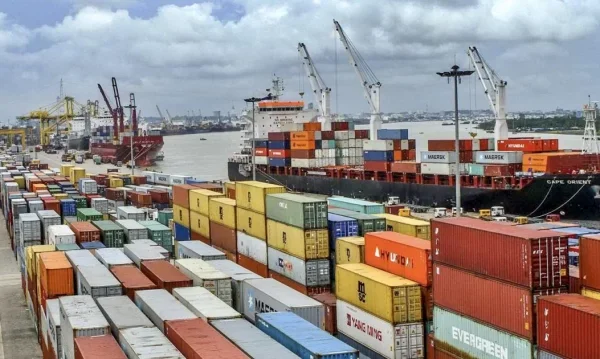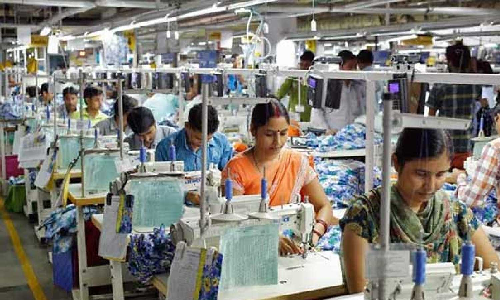Dilatory diversification keeps exports undersized
- Update Time : Tuesday, July 15, 2025

TDS Desk:
Bangladesh misses out on trade opportunities for tardy export diversification as not a single sector save apparel and leather could cross billion-dollar-earning mark over the years, analysts remind at this time of marketing-related troubles.
Although export earnings from some promising products beyond apparel and leather goods had shown a better performance in the previous fiscal years, their achievements in recent years have dimmed, they say.
“For the single-product dependency, the recent US tariff turmoil has affected the country’s export earnings severely,” says one of them, as exporters fear work-order holdback.
Bangladesh’s potential export earners are agricultural goods, including processed food, light engineering, jute and jute goods, chemical products, including medicine, plastic products, cotton and specialized textiles.
The country’s export trade is heavily dependent on a single product — ready-made garment (RMG) — as nearly 83 per cent of the US$48.214 billion export earnings come from this sector.
The gap between the earnings from the largest export earner, RMG, and the second-largest one, leather and leather goods, is also yawning.
The country made shipment worth $1.145 billion of the lather and leather goods in the immediate-past fiscal year (FY) 2024-25, EPB data showed.
Analysing Export Promotion Bureau (EPB) data, that earnings from the potential sector plunged in the last FY2025 compared to the previous fiscal year.
Analysts say the government has been working to diversify the made-in-Bangladesh products for its external business boost over the last three decades that has so far failed to bring any expected result.
A lack of proper policy and guidelines is identified as the key reasons for the “failures”.
At least 10-12 products and sectors have big potential for entering the trajectory of billions of dollars of export earning but those have been struggling for many years, they point out about the lost opportunities.
Foreign-exchange earnings from those potential products have been stagnant for many years as they could not cross the billion-dollar mark over the last few years.
Among the potential products, the export earnings from home textiles, jute and jute goods, and agricultural goods crossed the billion-dollar mark even two years ago, which have now fallen behind in last two years.
Similarly, the foreign-exchange earnings from the potential sectors like frozen and live fishes, chemical products, plastic products, cotton and cotton products’ specialised textiles, footwear (except leather) and light-engineering products are showing a stagnant trend over the years.
The light-engineering sector was showing light of export diversification three years ago in FY2022 with $795.63-million earnings but its performance later dropped significantly over the last three years.
The earnings from light engineering were recorded at $494.4 million in FY2023, while $486.75 million in FY2024 and $535.56 million in FY2025.
Once significant — the export market for the Bangladeshi frozen and live fishes — has also faded in recent years as it is not being able to enhance earnings despite having huge potential.
The earnings from frozen and live fishes had been recorded at between $376.68 million and $532.94 million over the last four years.
The performance of the footwear — excluding leather-made footwear — was also maintaining within a bracket as it is hovering at about a $450 million worth of earnings on average per year.
Masrur Reaz, Chairman and CEO of Policy Exchange Bangladesh, says the government should have some effective policies for product diversification in the export basket.
“I think the existing policy and fiscal incentives are not working properly. So, those should be upgraded and time-befitting through adjusting the global market demand and requirements,” he says.
For the single-product dependency, the recent US tariff hike has affected the country’s export earnings severely, he adds.


















